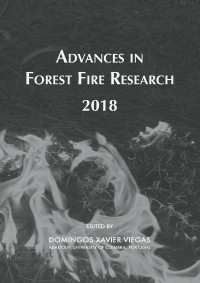Please use this identifier to cite or link to this item:
https://hdl.handle.net/10316.2/44654| Title: | Extreme weather conditions: the role of an heat wave on wildfires in Portugal | Authors: | Parente, Joana Pereira, Mário G. Amraoui, Malik Fischer, E. M. |
Keywords: | Heat wave;Extreme wildfire;Extreme conditions;Climate change;Portugal | Issue Date: | 2018 | Publisher: | Imprensa da Universidade de Coimbra | Journal: | http://hdl.handle.net/10316.2/44517 | Abstract: | Heat waves (HW) combined with periods of drought, as the one of 2017, may have a significant impact on the occurrence of extreme wildfires (EW) which, in turn, can have devastating social, economic and environmental consequences. EWs may modify (i) vegetation structure and dynamics; (ii) water quantity and quality; (iii) air quality; (iv) human health, loss of life, damage to property and infrastructures. On last decades, EWs in Continental Portugal increased in frequency and impacts. The main focus of this study is to assess the influence of HWs on the occurrence of EWs in mainland Portugal. In this study, EWs will be considered as wildfires with burnt area ≥ 5000 ha. In a first stage, HW occurrence was assessed on the basis of Fischer and Schär (2010) definition for a recent past and different future climate scenarios. In the second stage, spatial and temporal distributions of EWs were related to the occurrence and characteristics of HWs in the recent past. Finally, projections of EWs for the future are inferred from the potential changes in the characteristics of HWs for different future climate scenarios. This study benefits from the existence of reliable fire datasets, with accurate and detailed information on the date/time of ignition/extinction, the location, the shape and the size of the burnt area, as well as consistent high resolution of meteorological datasets for recent past and future climate scenarios. Results disclose: (i) almost all EWs were active during an HW; (ii) the vast majority of total EWs days were also HW days; (iii) 4/5 of the EWs had duration completely contained in the duration of an HW; and, (iv) the same amount of the EWs occurred during and in the area affected by HW. This study aims to help the definition of strategies for adaptation and mitigation of climate change to HW as well as for fire risk management. | URI: | https://hdl.handle.net/10316.2/44654 | ISBN: | 978-989-26-16-506 (PDF) | DOI: | 10.14195/978-989-26-16-506_137 | Rights: | open access |
| Appears in Collections: | Advances in forest fire research 2018 |
Files in This Item:
| File | Description | Size | Format | |
|---|---|---|---|---|
| extreme_weather_conditions.pdf | 871.54 kB | Adobe PDF |  |
Items in DSpace are protected by copyright, with all rights reserved, unless otherwise indicated.
